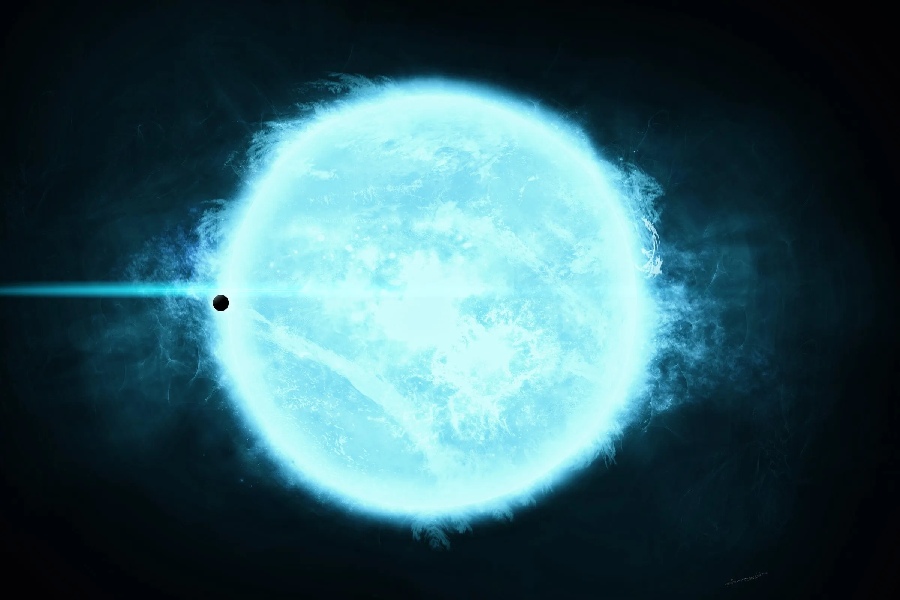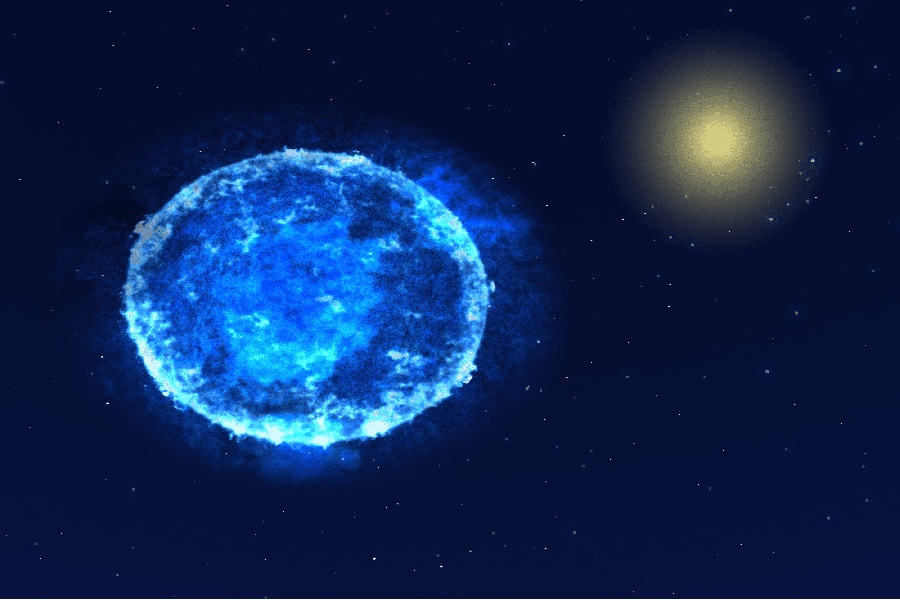Vega is one of the brightest, most well-known stars in Earth’s night sky. This bluish-white star has fascinated skywatchers and astronomers for millennia. But what type of star is Vega exactly?
In this article, we will first familiarize ourselves with Vega—where it is located, why it shines so brightly, and key observations made by astronomers over the centuries. Then, we will explore stellar classification systems categorizing stars by mass, temperature, luminosity, and other factors.
We will focus on Vega’s specific spectroscopic characteristics to nail down its position on the stellar family tree. Insights from stellar modeling and evolutionary theory reveal Vega’s current life stage and future evolution.
We will also dive into some fascinating Vega star facts and explain the true nature of the beautiful blue-tinged star known fondly as Vega. Let’s start!

What Type of Star Is Vega?
Vega is a type A main-sequence star, commonly known as an A-type star. It is the brightest star in the constellation Lyra and is located relatively close to Earth, making it visible in the night sky.
Vega star color is bluish-white, one of the more prominent stars in the Northern Hemisphere. It has a spectral class of A0V, indicating its temperature and main-sequence status.
Spectral Classification
The spectral classification system is a powerful tool used by astronomers to categorize stars based on their observable characteristics. This system groups stars into distinct spectral types, each representing a specific temperature range, luminosity, and chemical composition.
Temperature is a crucial factor in spectral classification, as it determines the absorption lines present in a star’s spectrum. Hotter stars exhibit different patterns of absorption lines compared to cooler ones.
Furthermore, luminosity, or the intrinsic brightness of a star, also plays a role in classification. Stars with higher luminosities tend to have broader absorption lines due to their atmospheres’ increased density and pressure.
Also, the chemical composition of a star’s atmosphere, particularly the presence and abundance of various elements, can influence its spectral characteristics. This can also contribute to its classification.
Vega’s spectral type
Vega, a dazzling star gracing the summer night sky, holds a special place in astronomy. Its classification as an A0V star, based on its spectral type, unlocks a wealth of information about its fiery nature.
Stellar fingerprints
A star’s spectrum is like its unique fingerprint. Astronomers can understand what a star is made of and how hot it is by studying the specific wavelengths of light it emits. Vega is incredibly hot, with a surface temperature of around 9,600 Kelvin, which is much hotter than our Sun.
The Hertzsprung-Russell (H-R) diagram is a useful tool for astronomers, showing a star’s brightness against its temperature. Vega, being an A0V star, sits in a significant position on this diagram known as the main sequence. This is where stars like our Sun quietly convert hydrogen into helium in their cores.
Vega’s stellar evolution
During its stable phase, Vega shines brightly, marking the peak of its life. Astronomers can vividly understand this massive star by studying Vega’s spectral code and its position on the H-R diagram.
They learn about its intense heat, continuous nuclear fusion, and its role in stellar evolution. Looking ahead, scientists can predict Vega’s future as it transforms into a red giant and eventually a white dwarf.

Characteristics of Vega
Physical properties
Vega is a star with a mass about 2.15 times that of our Sun. Its radius is 2.73 times that of the Sun. Despite its large size, Vega has a low overall density, indicating its young age and ongoing fusion process. Its surface temperature is around 9,600 Kelvin.
Vega is a standard A-type main sequence star, still fusing hydrogen into helium at its core. Its high temperature and low density give it a luminous appearance and contribute to its influence on the surrounding interstellar medium. Vega is relatively young, at only around 455 million years old, radiating much more intensity than the older Sun.
Spectral type implications
As mentioned, with a spectral classification of A0V, Vega is a textbook example of a hot A-type main sequence star. The lack of a strong hydrogen absorption line at 486 nm indicates a low surface gravity, while ionized metals like Fe II provide prominent line features throughout the visual range.
This indicates that Vega is a main sequence star that has been undergoing fusion for a relatively short period. Its classification as an A-type star means its effective surface temperature exceeds its average temperature.
For Vega, this places it towards the hotter end of the category. The dominance of hydrogen fusion suggests a star that has recently entered the main sequence phase. This phase occurs after emerging from its dusty stellar nursery.
The ongoing gravitational contraction also suggests the star is still in the early part of the main sequence. Overall, Vega’s spectra closely match physics-based models for a 400 million-year-old gravitationally dominated star with sustained hydrogen fusion at its core.
Vega as a Main Sequence Star
The main sequence phase occurs when a star begins fusing hydrogen into helium at its core, which supplies energy to support the star against gravitational collapse. This process determines the vega star luminosity and other key characteristics.
This balanced state between nuclear fusion at the core and gravity allows a star to maintain a stable luminosity and temperature over billion-year timespans. Understanding where a star falls on the main sequence provides insights into its evolutionary stage and life cycle.
Vega on the Hertzsprung-Russell diagram
On the Hertzsprung-Russell diagram relating luminosity and surface temperature, Vega falls near the center of the main sequence curve. It has around nine times the luminosity and three times the temperature of our Sun.
This confirms Vega is stably fusing hydrogen at its core to support its luminous output and high surface temperature. Its exact location indicates it is likely a young main sequence star that has only recently settled into hydrogen burning after formation.
Vega’s age and future evolution
Vega is still in the early stages of its main sequence life. At this stage, hydrogen fusion in its core produces energy, balancing the radiation emitted from its surface. However, in a few hundred million years, the hydrogen fuel in Vega’s core will run out, causing it to expand and become a red giant.
Eventually, fusion will stop altogether, and Vega will transform into a white dwarf, sustained only by residual heat. Observations of Vega’s spectra and estimated age align with the characteristics expected of a youthful A-type main sequence star.
Does Vega Have Planets?
Yes, Vega is believed to have a planetary system. In 2021, astronomers announced the discovery of a Neptune-sized exoplanet orbiting Vega. This planet, named Vega b, is estimated to have a mass between 20 to 100 times that of Earth and orbits its star at a distance of about 64 light-years.
Conclusion
What type of star is Vega? It belongs to the A-type main sequence category. This bluish-white star, situated in the Lyra constellation and relatively close to Earth, has a surface temperature of approximately 9,600 Kelvin.
Its spectral class, A0V, indicates its high temperature and main-sequence status. Vega’s position on the Hertzsprung-Russell diagram confirms its stable hydrogen fusion and youthful nature.
Despite being around 455 million years old, Vega is still in its early main sequence phase, with plenty of hydrogen fuel left to sustain its luminosity. However, in the future, it will evolve into a red giant and eventually a white dwarf. These findings add to our understanding of this fascinating star and its celestial neighborhood.
